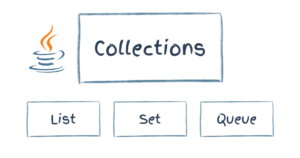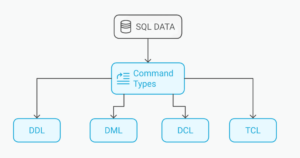
Being Java nerds, we are always interested in obscure details that may not be of direct use but teach us more about Java and the JVM. That’s why I decided to publish this great article that Lukas Eder originally wrote on jooq.org.
So, you’ve been working with Java since the very beginning? Remember the days when it was called “Oak”, when OO was still a hot topic, when C++ folks thought that Java had no chance, when Applets were still a thing?
I bet that you didn’t know at least half of the following things. Let’s start this week with some great surprises about the inner workings of Java.
1. There is no such thing as a checked exception
That’s right! The JVM doesn’t know any such thing, only the Java language does.
Today, everyone agrees that checked exceptions were a mistake. As Bruce Eckel said on his closing keynote at GeeCON, Prague, no other language after Java has engaged in using checked exceptions, and even Java 8 does no longer embrace them in the new Streams API (which can actually be a bit of a pain, when your lambdas use IO or JDBC).
Do you want proof that the JVM doesn’t know such a thing? Try the following code:
public class Test {
// No throws clause here
public static void main(String[] args) {
doThrow(new SQLException());
}
static void doThrow(Exception e) {
Test.<RuntimeException> doThrow0(e);
}
@SuppressWarnings("unchecked")
static <E extends Exception> void doThrow0(Exception e) throws E {
throw (E) e;
}
}
Not only does this compile, this also actually throws the SQLException, you don’t even need Lombok’s @SneakyThrows for that.
More details about the above can be found in this article here, or here, on Stack Overflow.
2. You can have method overloads differing only in return types
That doesn’t compile, right?
class Test {
Object x() { return "abc"; }
String x() { return "123"; }
}
Right. The Java language doesn’t allow for two methods to be “override-equivalent” within the same class, regardless of their potentially differing throws clauses or return types.
But wait a second. Check out the Javadoc of Class.getMethod(String, Class...). It reads:
Note that there may be more than one matching method in a class because while the Java language forbids a class to declare multiple methods with the same signature but different return types, the Java virtual machine does not. This increased flexibility in the virtual machine can be used to implement various language features. For example, covariant returns can be implemented with bridge methods; the bridge method and the method being overridden would have the same signature but different return types.
Wow, yes that makes sense. In fact, that’s pretty much what happens when you write the following:
abstract class Parent<T> {
abstract T x();
}
class Child extends Parent<String> {
@Override
String x() { return "abc"; }
}
Check out the generated byte code in Child:
// Method descriptor #15 ()Ljava/lang/String;
// Stack: 1, Locals: 1
java.lang.String x();
0 ldc </String><String "abc"> [16]
2 areturn
Line numbers:
[pc: 0, line: 7]
Local variable table:
[pc: 0, pc: 3] local: this index: 0 type: Child
// Method descriptor #18 ()Ljava/lang/Object;
// Stack: 1, Locals: 1
bridge synthetic java.lang.Object x();
0 aload_0 [this]
1 invokevirtual Child.x() : java.lang.String [19]
4 areturn
Line numbers:
[pc: 0, line: 1]
So, T is really just Object in byte code. That’s well understood.
The synthetic bridge method is actually generated by the compiler because the return type of the Parent.x() signature may be expected to Object at certain call sites. Adding generics without such bridge methods would not have been possible in a binary compatible way. So, changing the JVM to allow for this feature was the lesser pain (which also allows covariant overriding as a side-effect…) Clever, huh?
Are you into language specifics and internals? Then find some more very interesting details here.
3. All of these are two-dimensional arrays!
class Test {
int[][] a() { return new int[0][]; }
int[] b() [] { return new int[0][]; }
int c() [][] { return new int[0][]; }
}
Yes, it’s true. Even if your mental parser might not immediately understand the return type of the above methods, they are all the same! Similar to the following piece of code:
class Test {
int[][] a = {{}};
int[] b[] = {{}};
int c[][] = {{}};
}
You think that’s crazy? Imagine using JSR-308 / Java 8 type annotations on the above. The number of syntactic possibilities explodes!
@Target(ElementType.TYPE_USE)
@interface Crazy {}
class Test {
@Crazy int[][] a1 = {{}};
int @Crazy [][] a2 = {{}};
int[] @Crazy [] a3 = {{}};
@Crazy int[] b1[] = {{}};
int @Crazy [] b2[] = {{}};
int[] b3 @Crazy [] = {{}};
@Crazy int c1[][] = {{}};
int c2 @Crazy [][] = {{}};
int c3[] @Crazy [] = {{}};
}
Type annotations. A device whose mystery is only exceeded by its power
Or in other words:
When I do that one last commit just before my 4 week vacation

I let the actual exercise of finding a use-case for any of the above to you.
4. You don’t get the conditional expression
So, you thought you knew it all when it comes to using the conditional expression? Let me tell you, you didn’t. Most of you will think that the below two snippets are equivalent:
Object o1 = true ? new Integer(1) : new Double(2.0);
… the same as this?
Object o2;
if (true)
o2 = new Integer(1);
else
o2 = new Double(2.0);
Nope. Let’s run a quick test
System.out.println(o1);
System.out.println(o2);
This programme will print:
1.0
1
Yep! The conditional operator will implement numeric type promotion, if “needed”, with a very very very strong set of quotation marks on that “needed”. Because, would you expect this programme to throw a NullPointerException?
Integer i = new Integer(1);
if (i.equals(1))
i = null;
Double d = new Double(2.0);
Object o = true ? i : d; // NullPointerException!
System.out.println(o);
More information about the above can be found here.
5. You also don’t get the compound assignment operator
Quirky enough? Let’s consider the following two pieces of code:
i += j;
i = i + j;
Intuitively, they should be equivalent, right? But guess what. They aren’t! The JLS specifies:
A compound assignment expression of the form E1 op= E2 is equivalent to E1 = (T)((E1) op (E2)), where T is the type of E1, except that E1 is evaluated only once.
This is so beautiful, I would like to cite Peter Lawrey‘s answer to this Stack Overflow question:
A good example of this casting is using *= or /=
byte b = 10; b *= 5.7; System.out.println(b); // prints 57or
byte b = 100; b /= 2.5; System.out.println(b); // prints 40or
char ch = '0'; ch *= 1.1; System.out.println(ch); // prints '4'or
char ch = 'A'; ch *= 1.5; System.out.println(ch); // prints 'a'
Now, how incredibly useful is that? I’m going to cast/multiply chars right there in my application. Because, you know…
6. Random integers
Now, this is more of a puzzler. Don’t read the solution yet. See if you can find this one out yourself. When I run the following programme:
for (int i = 0; i < 10; i++) {
System.out.println((Integer) i);
}
… then “sometimes”, I get the following output:
92
221
45
48
236
183
39
193
33
84
How is that even possible??
.
.
.
.
.
. spoiler… solution ahead…
.
.
.
.
.
OK, the solution is here (https://blog.jooq.org/2013/10/17/add-some-entropy-to-your-jvm/) and has to do with overriding the JDK’s Integer cache via reflection, and then using auto-boxing and auto-unboxing. Don’t do this at home! Or in other words, let’s think about it this way, once more
When I do that one last commit just before my 4 week vacation

7. GOTO
This is one of my favourite. Java has GOTO! Type it…
int goto = 1;
This will result in:
Test.java:44: error: <identifier> expected
int goto = 1;
^
This is because goto is an unused keyword, just in case…
But that’s not the exciting part. The exciting part is that you can actually implement goto with break, continue and labelled blocks:
Jumping forward
label: {
// do stuff
if (check) break label;
// do more stuff
}
In bytecode:
2 iload_1 [check]
3 ifeq 6 // Jumping forward
6 ..
Jumping backward
label: do {
// do stuff
if (check) continue label;
// do more stuff
break label;
} while(true);
In bytecode:
2 iload_1 [check]
3 ifeq 9
6 goto 2 // Jumping backward
9 ..

8. Java has type aliases
In other languages (e.g. Ceylon), we can define type aliases very easily:
interface People => Set<Person>;
A People type constructed in such a way can then be used interchangably with Set<Person>:
People? p1 = null;
Set</Person><Person>? p2 = p1;
People? p3 = p2;
In Java, we can’t define type aliases at a top level. But we can do so for the scope of a class, or a method. Let’s consider that we’re unhappy with the namings of Integer, Long etc, we want shorter names: I and L. Easy:
class Test<I extends Integer> {
<L extends Long> void x(I i, L l) {
System.out.println(
i.intValue() + ", " +
l.longValue()
);
}
}
In the above programme, Integer is “aliased” to I for the scope of the Test class, whereas Long is “aliased” to L for the scope of the x() method. We can then call the above method like this:
new Test().x(1, 2L);
This technique is of course not to be taken seriously. In this case, Integer and Long are both final types, which means that the types I and L are effectively aliases (almost. assignment-compatibility only goes one way). If we had used non-final types (e.g. Object), then we’d be really using ordinary generics.
Enough of these silly tricks. Now for something truly remarkable!
9. Some type relationships are undecidable!
OK, this will now get really funky, so take a cup of coffee and concentrate. Consider the following two types:
// A helper type. You could also just use List
interface Type<T> {}
class C implements Type<Type <? super C>> {}
class D<P> implements Type<Type <? super D<D<P>>>> {}
Now, what do the types C and D even mean?
They are somewhat recursive, in a similar (yet subtly different) way that java.lang.Enum is recursive. Consider:
public abstract class Enum<E extends Enum<E>> { ... }
With the above specification, an actual enum implementation is just mere syntactic sugar:
// This
enum MyEnum {}
// Is really just sugar for this
class MyEnum extends Enum<MyEnum> { ... }
With this in mind, let’s get back to our two types. Does the following compile?
class Test {
Type< ? super C> c = new C();
Type< ? super D<Byte>> d = new D<Byte>();
}
Hard question, and Ross Tate has an answer to it. The question is in fact undecidable:
Is C a subtype of Type<? super C>?
Step 0) C <?: Type<? super C>
Step 1) Type<Type<? super C>> <?: Type (inheritance)
Step 2) C (checking wildcard ? super C)
Step . . . (cycle forever)
And then:
Is D a subtype of Type<? super D<Byte>>?
Step 0) D<Byte> <?: Type<? super C<Byte>>
Step 1) Type<Type<? super D<D<Byte>>>> <?: Type<? super D<Byte>>
Step 2) D<Byte> <?: Type<? super D<D<Byte>>>
Step 3) Type<Type<? super C<C>>> <?: Type<? super C<C>>
Step 4) D<D<Byte>> <?: Type<? super D<D<Byte>>>
Step . . . (expand forever)
Try compiling the above in your Eclipse, it’ll crash! (don’t worry. I’ve filed a bug)
Let this sink in…
Some type relationships in Java are undecidable!
If you’re interested in more details about this peculiar Java quirk, read Ross Tate’s paper “Taming Wildcards in Java’s Type System” (co-authored with Alan Leung and Sorin Lerner), or also our own musings on correlating subtype polymorphism with generic polymorphism
10. Type intersections
Java has a very peculiar feature called type intersections. You can declare a (generic) type that is in fact the intersection of two types. For instance:
class Test<T extends Serializable & Cloneable> {
}
The generic type parameter T that you’re binding to instances of the class Test must implement both Serializable and Cloneable. For instance, String is not a possible bound, but Date is:
// Doesn't compile
Test<String> s = null;
// Compiles
Test<Date> d = null;
This feature has seen reuse in Java 8, where you can now cast types to ad-hoc type intersections. How is this useful? Almost not at all, but if you want to coerce a lambda expression into such a type, there’s no other way. Let’s assume you have this crazy type constraint on your method:
<T extends Runnable & Serializable> void execute(T t) {}
You want a Runnable that is also Serializable just in case you’d like to execute it somewhere else and send it over the wire. Lambdas and serialisation are a bit of a quirk.
You can serialize a lambda expression if its target type and its captured arguments are serializable
But even if that’s true, they do not automatically implement the Serializable marker interface. To coerce them to that type, you must cast. But when you cast only to Serializable…
execute((Serializable) (() -> {}));
… then the lambda will no longer be Runnable.
Egh…
So…
Cast it to both types:
execute((Runnable & Serializable) (() -> {}));
Conclusion
I usually say this only about SQL, but it’s about time to conclude an article with the following:
Java is a device whose mystery is only exceeded by its power
Lukas Eder is founder and CEO of Data Geekery GmbH, the company behind jOOQ, located in St. Gallen, Switzerland. He is fascinated by the interaction of Java and SQL. Most of this experience he has obtained in the Swiss E-Banking field through various variants (JDBC, jOOQ, Hibernate, mostly with Oracle). As a Java Champion, he is happy to share this knowledge at various conferences, JUGs, in-house presentations and on his blog.







